#EAPS#EAPS111
Terms §
- Crust, mantle, core
- Lithosphere
- Asthenosphere
- Topography and bathymetry
- Magnetic reversals
- 3 types of plate boundaries
- Convergent
- Divergent
- Transform
- Convection
Things to think about §
- Relationship of topography, earthquakes, and volcanoes to plate margins
- The distinctive features associated with the 3 different types of plate margins
- What do magnetic reversals tell us about past plate motions
Basic Earth Structure §
- We know what the Earth’s interior looks like through seismology (study of earthquake energy release and propagation)
- We also can tell things based on igneous rocks that are brought to the surface
- And Structural features at the surface
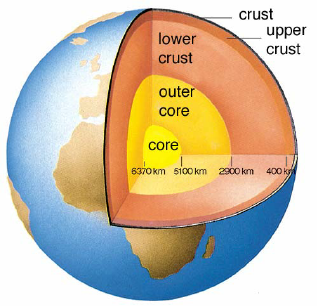
- The crust is actually very small. Upper/Lower crust on this picture is the Mantle.
- The outer core is liquid, and the inner core is solid
- Radius of the Earth is approximately 6371 kilometers (at widest)
- Mechanical vs Compositional Classifications
- Compositional = what it is made of
- Mechanical = how it behaves
- We have the Continental Crust, and the Oceanic Crust
- The crust and top roughly 100 km of mantle is the Lithosphere. The lithosphere is mechanically strong and rigid. This is where the plates are.
- The next 100 kilomters (100-200 km depth) is the Asthenosphere. It is mechanically weak and partially molten. The movement in the Asthenosphere is what allows the Lithosphere to move and thus the plates.
- The rock composition is roughly the same, but the fact that it is partially melted is what makes it important and different
- The Asthenosphere and Lithosphere are both part of the mantle. The Lithosphere also contains the crust
Tectonics §
- Topography = elevations above sea level (usually green to brown on maps)
- Bathymetry = depth below sea level to ocean floor (blues, sometimes black too)
- These combined help show plate tectonics
- There are several large plates that make up the Earth
- There are 3 different types of boundaries that are found where the plates meet, and most plates have all types somewhere
Features of Earths Surface §
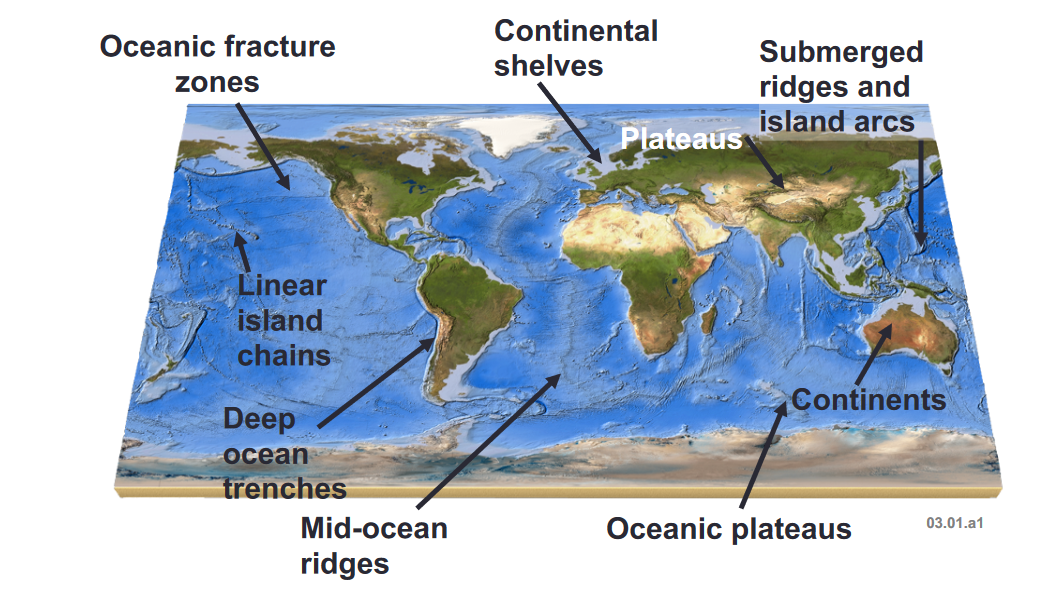
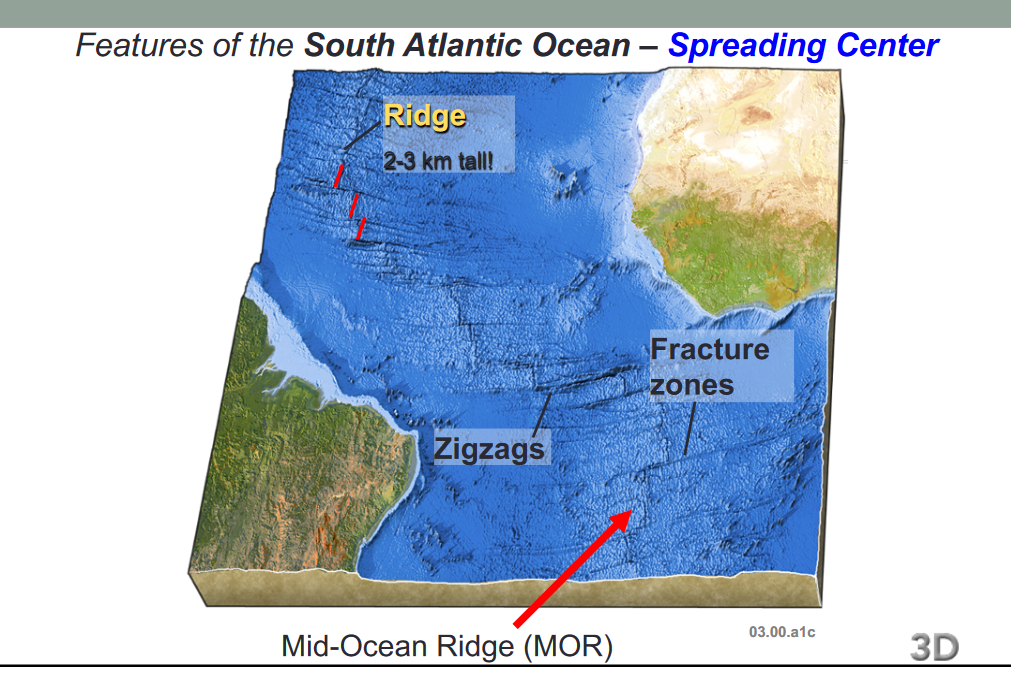
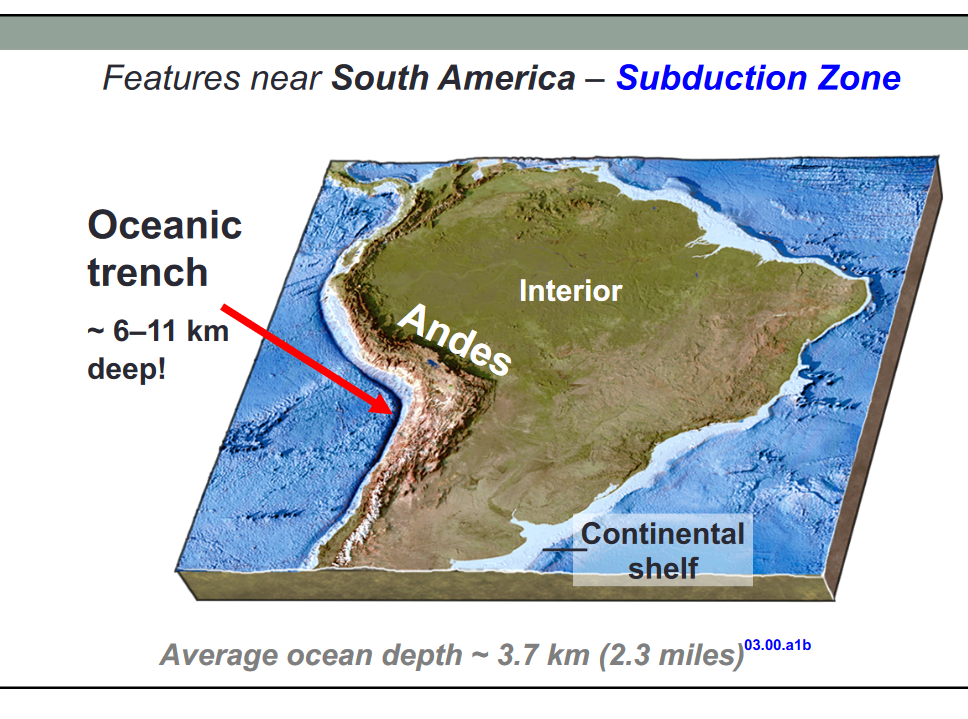
- Convergent Plate Boundary
- Subduction Zones
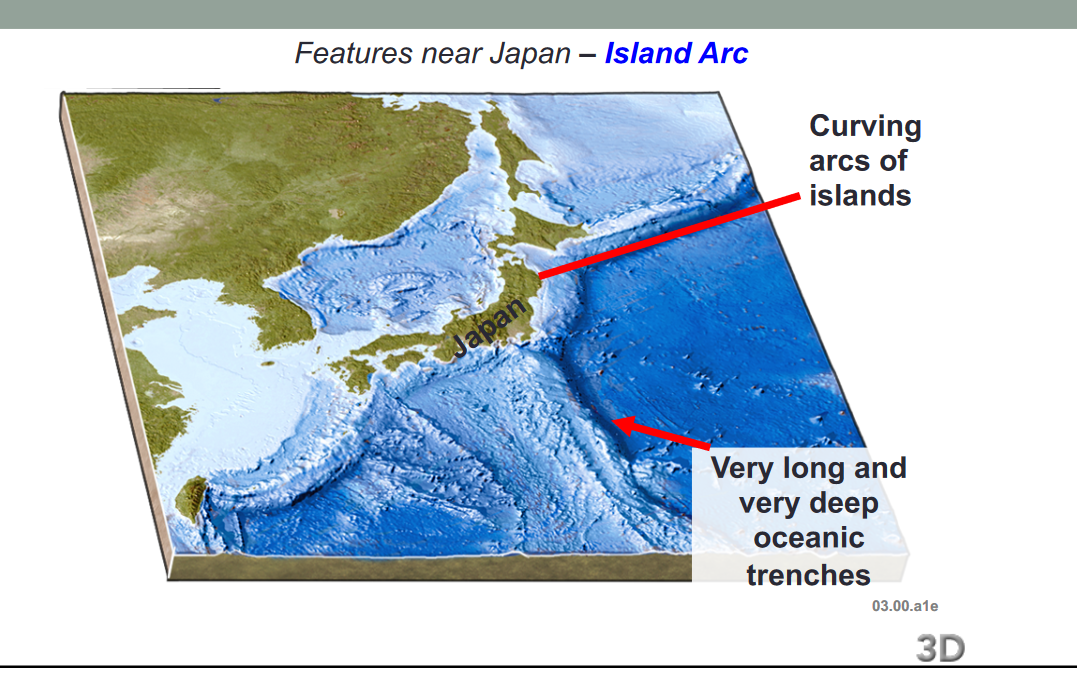
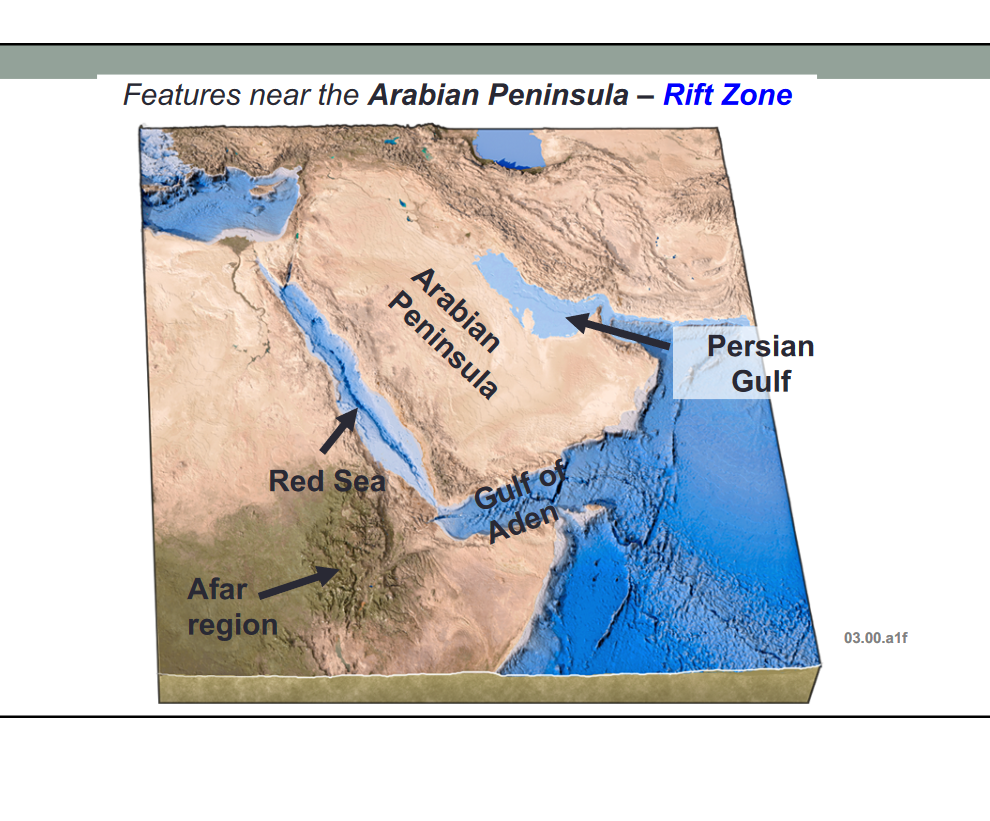
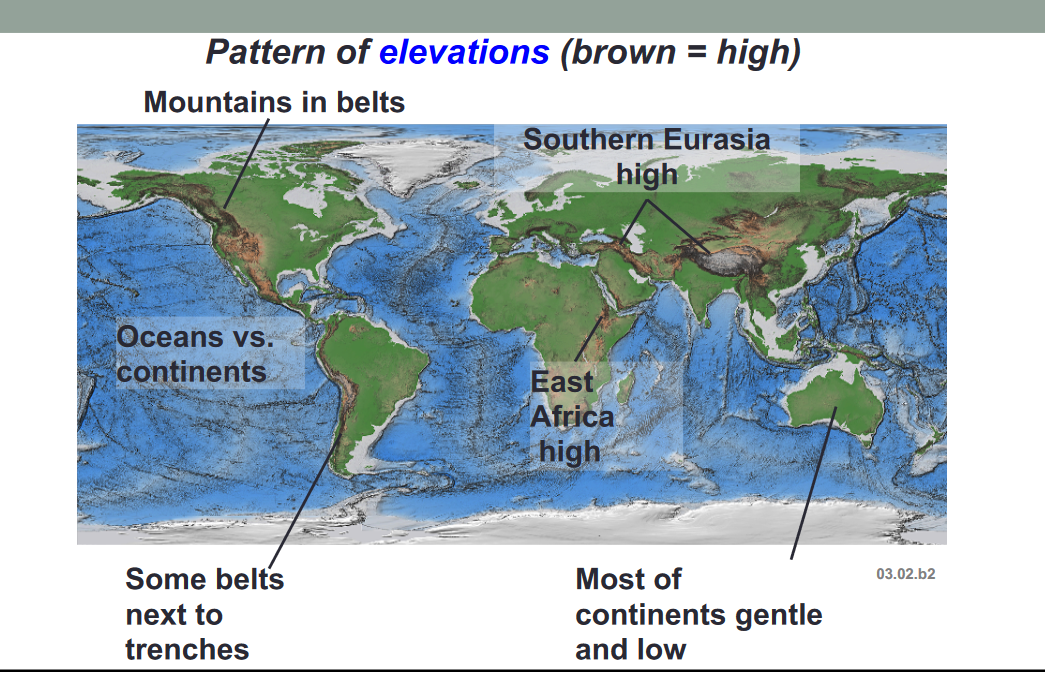
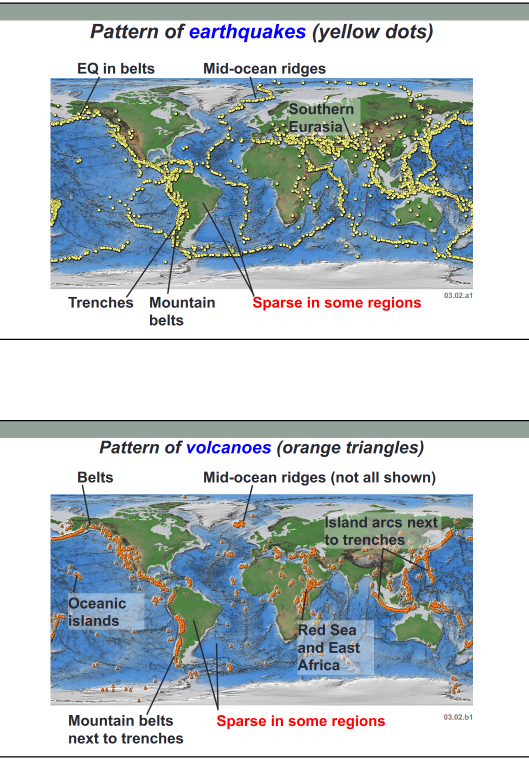
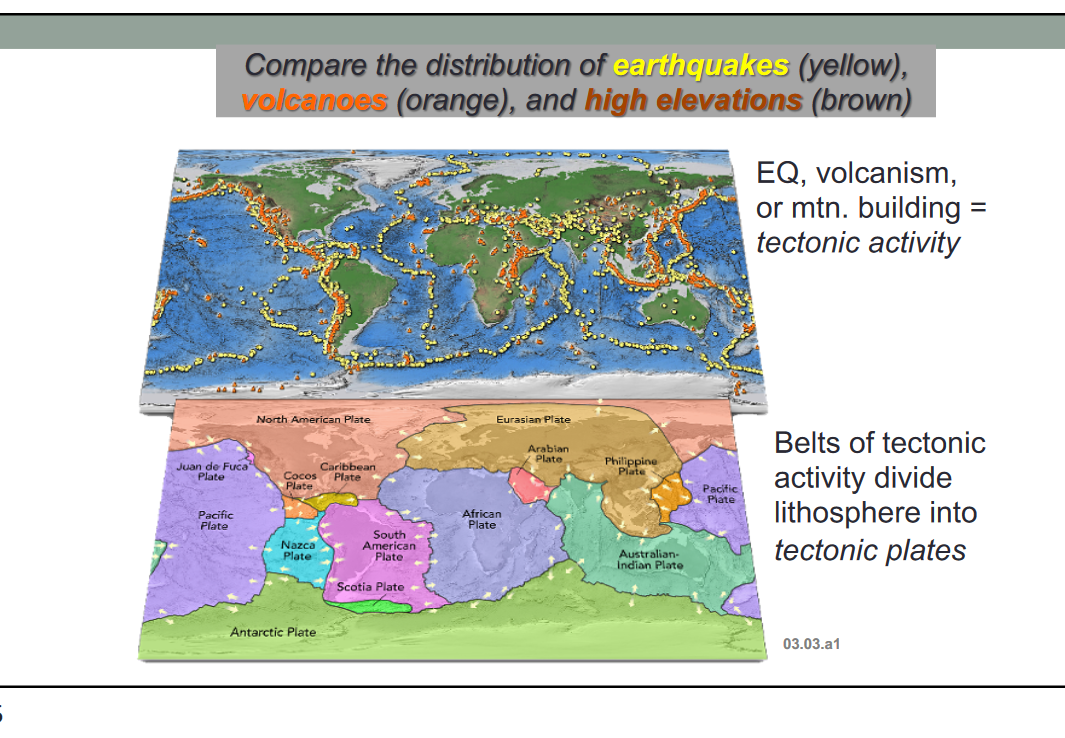
Plate Boundaries §
- 3 types of plate margins
- Divergent Boundaries
- Plates move apart
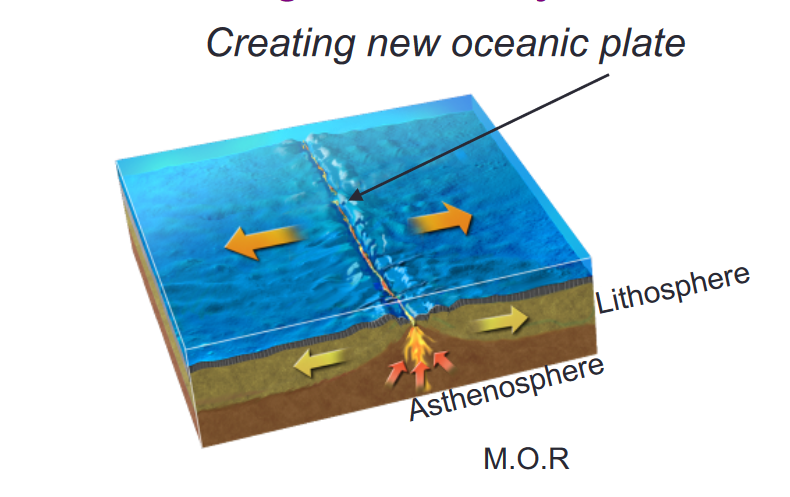
- At the very top of mid ocean ridges, molten material is coming up to the surface and solidifying further increasing the size of the plate
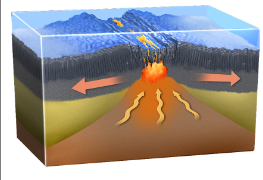
- The rocks are magnetized and when solidified you can see the effects of the magnetic field on the plates, showing its spread.
- This leads to magnetic stripes on the seafloor, they are symmetric across the ridge
- Aside:
- Earth’s magnetic field
- Inner core transfers heat to liquid outer core
- Outer core is convecting
- Movement of molten iron affected by Earth’s rotation, produces electrical currents and a magnetic field
- Magnetic field currently flows south to north (normal polarity)
- The magnetic field can change directions! North and South can switch
- We can see the change in magnetic field in the rocks
- How fast are plates spreading? Usually millimeters per year. Sometimes centimeters per year
- Convergent Boundaries
- Plates move toward each other
- Transform Boundaries
- Plates move horizontally past one another
Convection §
- Movement of heat with mass in the Earth (or anywhere)
- convection-water-top-bottom-temperature-molecules-process.webp
- This happens in the mantle, more specifically the Asthenosphere. It’s the motion of convection in the asthenosphere that pulls plates together or moves them apart
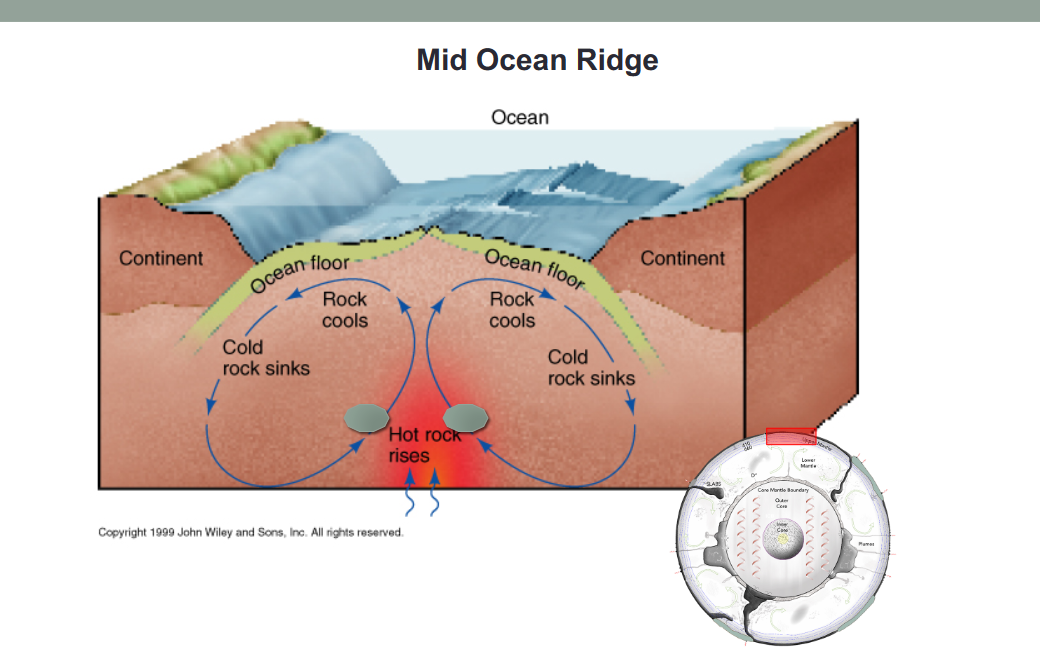
- Convection works via changes in density of the rock
- Rock material at the bottom gets hotter than surroundings
- It expands
- Same material in more volume = less dense
- Less dense than surroundings = floats
- Gets to top, cools off, contracts, gets more dense
- Sinks
- Starts again











